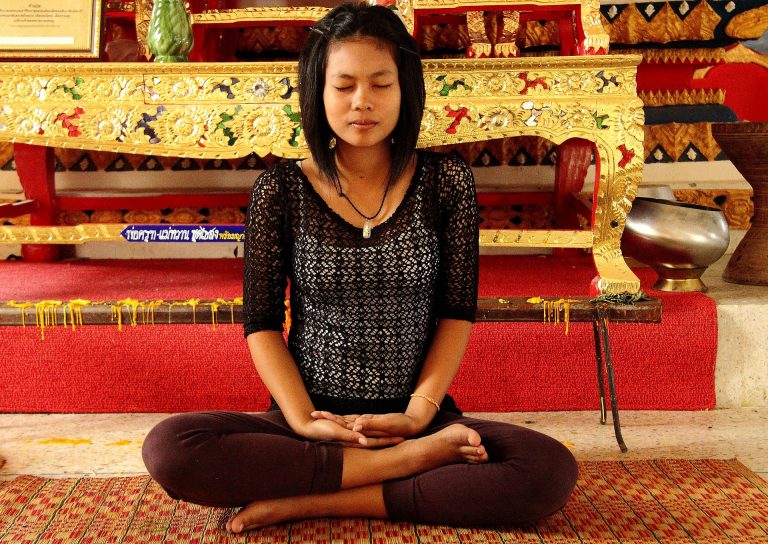Meditation
The Art of Meditation
The Art of Meditation: Mind Watching.
According to a revered forest monk who lived in a cave in Khao Yai, Thailand, there is an art to meditation. The initial step of meditation is to signal the one inside, the watcher, by taking the seat and closing your eyes. But the posture of the body is not the main concern. It is the posture of the mind that needs to be straight, alert, and receptive.
This type of meditation consists of observing the totality of our mind, our thoughts, our emotions, and our sensations with skillful detachment. We observe our mind (thoughts, emotions, and /or sensations) as they come and go; let them pass by like clouds in the sky. Whatever the present thought contains, we accept it as if we had chosen it. Urges will come and go. We don’t have to act on them. Feelings come and go; we let our breathing be our anchor.
These days, most of us have our own version of snowballing thought process, which leads to worries or fears. It is a well-worn groove we slip into. And once we are on that track, we usually go on the automatic pilot from the slightest trigger straight to the gloomy conclusion, feeling heavy and bleak and hopeless and unconscious to what is happening.
Thought-watching meditation practice is generally considered to be quite a challenging form of meditation. This practice purifies the mind. A part of the mind is always observing what is happening (the watcher) and it can do the task of improving the mind. If it learns to observe things as they are, then it will understand that when there are negative thoughts or emotions, the mind is distressed. As this observing part of the mind becomes stronger, the reacting parts of the mind become weaker. The mind becomes more pure and the suffering is removed.
Overview
With this mind watching meditation practice, we will begin to understand that the mind and thoughts are not facts and that mind and thoughts are not us. We can see that mind and thoughts as just mind and thoughts and can let go of them. This can slowly begin to have a powerful effect on the way we relate to our mind and thoughts in daily life. We can learn to let go of our negative thoughts and see that they are not as solid and real as we usually think they are. We can begin to let go of negative thoughts and their hold on us. Put the knowledge of meditation into action. We can come to understand how to live in a much wiser and more compassionate manner. Try it while there is still breath in this body.
Try mind-watching meditation practice The Art of Meditation:
- Sit in a comfortable, upright position which embodies dignity and wakefulness.
- Bring awareness to your breath. Practicing 5 to 10 minutes with breathing meditation. Observe and calm your breathing, your body and your emotions.
- You will notice that soon your attention has been taken away from your breath. When you notice this, let it go, and then return your awareness to your breath.
- Do this each time your mind wanders. Don’t judge the thoughts as good or bad. Our job is to keep bringing the mind back to observing the breath.

